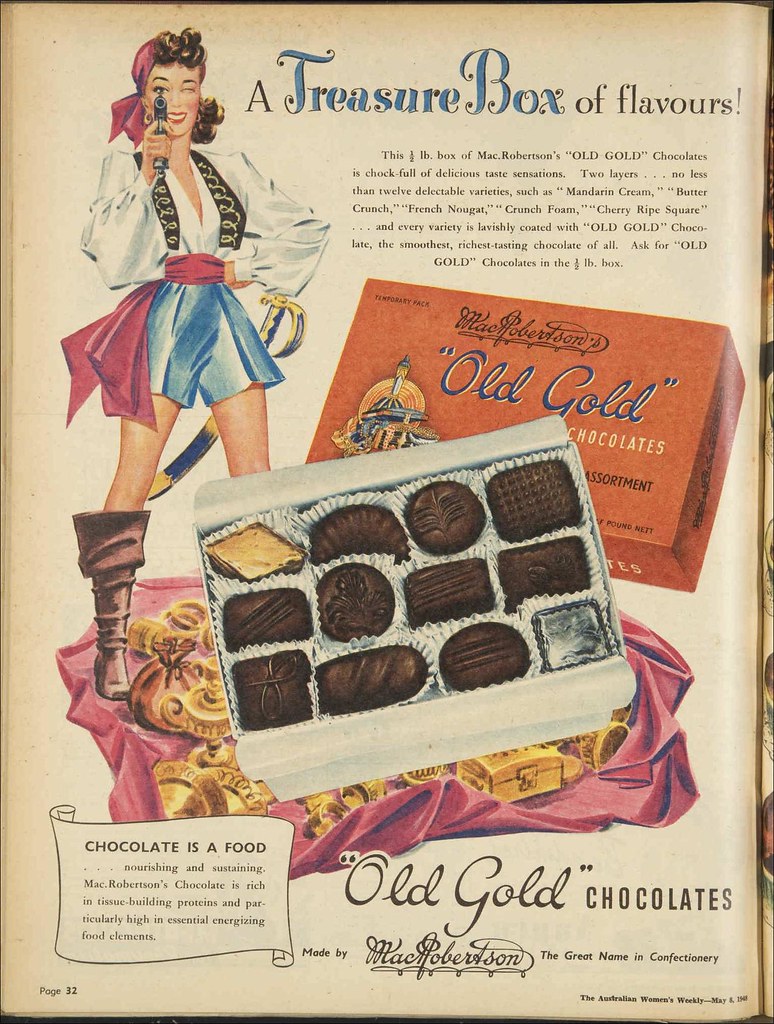In the early years of chocolate advertising, companies employed a clever strategy of targeting not just the end consumers, children, but their influential decision-makers, the mothers. Recognizing the strong influence children exerted on purchasing decisions, advertisers sought to appeal to both the children’s sweet tooth and the mothers’ desire to provide wholesome food for their offspring. This marked the inception of a long-standing advertising strategy that has shaped our perceptions of chocolate for generations.
Chocolate and cocoa, during the 19th century, were not just marketed as sweet treats, but as meal substitutes. This was a clever tactic to appeal to busy parents who were constantly seeking convenient yet nutritious options for their children. Advertisements highlighted the health benefits of chocolate, such as its inclusion of milk, portraying it as a wholesome choice for families. For instance, one notable advertisement from this era depicted a robust child, smiling broadly with a bar of chocolate in hand, with the tagline, “A meal in every bar.” This appeal to both convenience and nutrition served to position chocolate as a staple in the family pantry.
The early years of chocolate advertising were characterized by a focus on appealing to mothers and their children. Chocolate companies recognized the importance of targeting mothers, who were typically responsible for making purchasing decisions for the family. This approach was successful in driving up sales and remains evident in chocolate advertising today. For example, nostalgic and sentimental appeals were often used to attract parents, emphasizing the emotional bond between parent and child in their campaigns. Advertisements often featured scenes of families sharing chocolate, fostering warmth and closeness. The success of these early advertising strategies has had a lasting impact on the chocolate industry and continues to influence modern advertising practices.
Evolution of Chocolate Advertising



As societal attitudes towards sugar and chocolate began to change, chocolate advertising had to evolve to keep pace with these shifts. In recent years, health consciousness has become a dominant societal attitude, leading to an increasing demand for healthier food options. This prompted chocolate advertisers to adapt their strategies to reflect these changes. One significant adaptation was the marketing of “reduced sugar” products to address concerns about the negative health effects of sugar.
Hershey’s, a leading chocolate brand, capitalized on its reputation as “America’s candy bar” to create advertising campaigns that appealed to both the parent and child demographic. It effectively utilized the bond between parent and child, creating a sense of nostalgia and sentimentality in their campaigns. This strategy can be seen in one of their most popular commercials, where a father and son share a Hershey’s bar while fishing, underscoring the idea of Hershey’s chocolate as a facilitator of cherished family moments.
In a more recent shift, chocolate advertising has increasingly turned to personalization and customization to connect with consumers. Chocolate brands have recognized the importance of creating a positive connection between consumers and their products.By evoking positive emotions, chocolate advertising aims to foster brand likeability and loyalty. For instance, personalized chocolate wrappers with messages or names have become a popular way for brands to connect with consumers on a more personal level.
Impact of Societal Attitudes on Chocolate Advertising
The impact of societal attitudes on chocolate advertising cannot be overstated. In the early years, the rise of prepared foods made chocolate an attractive option for busy parents, leading to a perception of chocolate as a convenient meal substitute. As societal attitudes evolved, so did chocolate advertising strategies. Changing parenting and health attitudes drove childhood sugar consumption, which in turn influenced chocolate advertising strategies.
One clear example of this is how advertisers capitalized on the emotional bond between parents and children. They used sentimental appeals to attract parents, emphasizing the role of chocolate in fostering familial connections and creating moments of joy. A typical advertisement from this era might feature a family enjoying chocolate together during a picnic or holiday celebration, associating chocolate with positive family experiences and memories.
With the rise of health consciousness, chocolate advertisements began to feature “reduced sugar” products, appealing to parents’ concerns about the health effects of sugar. This shift reflects the broader societal trend towards healthier eating and living. Despite these changes, the emotional appeal of chocolate remains a central theme in advertising, with campaigns continuing to emphasize the role of chocolate in creating cherished family moments and experiences.
Portrayal of Women in Chocolate Advertising



Women have been prominently featured in chocolate advertising throughout history, with their portrayal reflecting societal expectations and attitudes.Between 1930 and 1960, Rowntree’s chocolate and cocoa advertisements mirrored societal expectations for women to return to traditional roles as housewives and mothers after World War II. These advertisements often associated chocolates with heterosexual courtship, reinforcing gender stereotypes and gendered roles.
One illustrative example is Aero advertisements, which reinforced the association of women, chocolate, and sex, but became less sexualized after the war. These advertisements often depicted women enjoying Aero chocolate bars in moments of private indulgence, suggesting a subtle but clear link between chocolate and sexual pleasure. Dairy Box advertisements, on the other hand, linked women, courtship, and chocolate, portraying men using chocolate to control women, perpetuating gender stereotypes.
Despite societal shifts and advancements in gender equality, the portrayal of women in chocolate advertising often still adheres to traditional gender stereotypes. Women are frequently depicted as the primary consumers of chocolate, often in contexts that suggest indulgence, pleasure, or reward. Modern chocolate advertisements continue to link chocolate with women, often in ways that perpetuate traditional gender roles and stereotypes.
Gender Stereotypes and Sexualization in Chocolate Advertising
The perpetuation of gender stereotypes and sexualization in chocolate advertising has long been a matter of concern. Dairy Box advertisements, for example, linked women, courtship, and chocolate, portraying men using chocolate to control women, perpetuating gender stereotypes. Similarly, Kit Kat advertisements reflected changing societal attitudes towards gender roles, showing more gender equality pre-war but becoming more traditional post-war.
One of the most striking examples of gender stereotyping in chocolate advertising comes from Rowntree’s chocolate and cocoa advertisements between 1930 and 1960. These ads depicted women as inferior to men and obsessed with chocolate. Women were often portrayed as passive recipients of chocolate gifts from men, reinforcing the idea that women are primarily consumers rather than active participants in the chocolate industry.
It is noteworthy, however, that while the portrayal of women in chocolate advertising has evolved to some extent, it continues to perpetuate gender stereotypes and objectification. Modern advertisements, while potentially less overt in their gendered messaging, often still depict women in roles or situations that suggest their primary value lies in their attractiveness or desirability. This persistent association between women and chocolate highlights the need for a more progressive, equitable approach to gender representation in chocolate advertising.
Iconic Chocolate Advertising Campaigns
Throughout the history of chocolate advertising, several campaigns have stood out for their creativity, memorability, and impact on consumer consciousness. Hershey’s “America’s candy bar” campaign is one such example. It appealed to a sense of national pride and the emotional bond between parent and child, contributing to its success. The campaign created a sense of nostalgia and sentimentality, effectively positioning Hershey’s as a beloved American tradition.
Similar success can be seen in Black Magic advertisements and Kit Kat campaigns. These campaigns became iconic for their memorable slogans and catchy jingles, leaving a lasting impact on consumer consciousness. The Black Magic campaign, for instance, featured the memorable tagline “Who knows the secret of the Black Magic box?” This intriguing slogan, coupled with the brand’s distinctive black packaging, created a sense of mystery and allure that resonated with consumers.
These iconic campaigns had a significant influence on consumer behavior, shaping people’s perceptions and preferences for different chocolate brands. They were successful in creating strong brand associations and emotional connections with the audience, demonstrating the power of effective advertising in shaping consumer choices and brand loyalty.
Racial Stereotypes in Chocolate Advertising
Chocolate advertising has also been marked by problematic racial stereotypes.The association between African women and chocolate in advertisements has historical roots in racist depictions, perpetuating objectification and commodification. Chocolate advertisements often put white consumers at the forefront and minimized chocolate’s African origins, contributing to racial stereotypes.
One of the most striking examples of this is the controversial ad by German chocolate brand “Super Dickmann’s”, which faced backlash for a tweet depicting Meghan Markle, a woman of mixed race, as a chocolate-covered marshmallow. This ad sparked widespread criticism for its racist undertones and objectification of black women.
It is worth noting that modern chocolate advertisements still frequently link chocolate with women, with little change in the portrayal of women and racial dynamics. Despite efforts towards increased representation and diversity, there is still a need for more equitable portrayals in chocolate advertising. This is particularly important as the chocolate industry seeks to authentically represent its diverse consumer base and challenge harmful stereotypes.
The Commodification of Black Women in Chocolate Advertising
The commodification of black women in chocolate advertising has been a concerning issue. Historically, chocolate advertisements have dehumanized and fetishized black women, perpetuating racial stereotypes and reinforcing power dynamics. The association between black skin and chocolate has contributed to the objectification and commodification of black women.
For instance, advertisements have often depicted black women as exotic and hypersexualized objects of desire. This harmful portrayal reinforces racial stereotypes and reinforces power imbalances. Despite some progress, there is still a need for increased representation and more equitable portrayals in chocolate advertising to challenge and dismantle these harmful dynamics.
Advertising that perpetuates racial stereotypes and commodification not only harms the individuals represented, but also contributes to broader societal inequities. The chocolate industry, as a significant player in the global economy, has a responsibility to promote fair and accurate representations in its advertising. By doing so, it can contribute to a more equitable and inclusive society.
Impact of Chocolate Advertising on the Chocolate Industry
Advertising plays a significant role in shaping the chocolate industry. It influences consumer preferences and purchasing decisions, ultimately driving the success of chocolate brands. The commercial confectionery industry saw significant growth during the Industrial Revolution, with branding and advertising becoming essential components of marketing strategies.
The impact of advertising on the chocolate industry is evident in the popularity and success of specific brands. Brands that have developed effective advertising campaigns, such as Hershey’s and Cadbury, have managed to secure a significant market share and establish themselves as household names. These brands have successfully influenced consumer behavior and shaped the landscape of the chocolate industry.
In recent decades, customization and personalization have become important strategies in chocolate advertising. Brands recognize the power of creating emotional connections with consumers and have utilized chocolate’s ability to evoke positive emotions. This emotional connection fosters brand loyalty and long-term consumer relationships.
The Emotional Connection in Chocolate Advertising
- Emotion plays a key role in chocolate advertising.
- Chocolate has long been associated with positive emotions, evoking feelings of comfort, indulgence, and pleasure.
- Advertisers tap into these emotional responses to create a positive connection between consumers and chocolate brands.
- Research shows that emotions play a crucial role in consumer decision-making.
- By triggering positive emotional associations with their products, chocolate advertisers aim to foster brand likeability and loyalty.
- These emotional connections can lead to long-term relationships between consumers and chocolate brands, influencing purchasing decisions and driving the success of those brands.
- For example, many chocolate brands use advertising strategies that associate their products with special occasions, such as birthdays, holidays, and romantic celebrations.
- This association not only positions chocolate as a product to be enjoyed during happy times, but also creates an emotional connection between consumers and the brand.
- By associating their products with positive emotions and experiences, chocolate brands can increase their appeal and foster brand loyalty.
Conclusion
The history of chocolate advertising is a fascinating journey that reflects societal changes, evolving consumer preferences, and advancements in marketing strategies. From its early days of appealing to children’s sweet tooth and busy parents, to the evolution of advertising strategies in response to changing health consciousness, chocolate advertising has played a significant role in shaping consumer behavior and influencing the success of the chocolate industry.
The portrayal of women and racial dynamics in chocolate advertising have been areas of contention, with advertisements often reflecting and perpetuating societal stereotypes. Women have been prominently featured in chocolate advertising, often in ways that reinforce traditional gender roles and objectification. Similarly, racial stereotypes and commodification have been prevalent in chocolate advertising, particularly in the representation of black women.
Iconic advertising campaigns such as Hershey’s “America’s candy bar” have demonstrated the power of advertising in shaping consumer perceptions and preferences. These successful campaigns have leveraged emotional appeals and effective branding to create strong connections with consumers and drive brand loyalty.
Moving forward, there is a need for more inclusive and equitable representations in chocolate advertising. As societal attitudes continue to evolve, and as the consumer base becomes increasingly diverse, it is crucial for chocolate advertising to reflect this diversity and challenge harmful stereotypes. By doing so, the chocolate industry can continue to thrive and make a positive impact on society.

